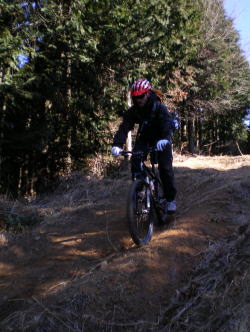In a previous post, I explained a little about the Japanese-born theology of Shintoism. The Shinto religion is a polytheistic, naturalistic and animistic belief system with deep Buddhism and some Confucianism roots. If I understand it correctly, the belief system revolves around living in harmony with nature and community by showing respect to kami, a word they translate as “god.” (That said, kami does not translate as “God” like in “The Holy Trinity” or a pagan “god” as in “Apollo, god of Light.” Personally, I think “spirit” is a much more viable translation.) Anyway, everything has ancient kami; cherry blossoms, Mt. Fuji or a house all have kami…or spirit. The goal is to live in harmony with it, though there is no eternal punishment or paradise should you succeed or fail. Got it? Yeah, me either.
Back to the exciting work week…
On Tuesday, 24 February we were invited to a ceremony intended to bless and purify the hardware we were about to sell to the Japanese government. Great time and effort was exerted to set up the event and no detail was left unattended on the altar or around the tent.
Before the ceremony began, we were all asked to go outside of the tent. Dressed in suits and ties, we waited in the cold and rain for each of the 60 men (yes, all men) to walk through the doorway to the tent and ritually purify themselves by washing their hands in water poured on them by another person. Many of the men bowed at the alter. I found out later they were bowing to the kami.
The ceremony itself was also fascinating, and I think it tells much about the Japanese culture. With the exception of the MC speaking a few calm, soothing words now and then, the only other noise for an hour were the priests reading or singing or chanting or clapping or dragging their feet around in the weirdest-looking shoes you can imagine. Each person in the tent knew when to stand or sit, when to bow or look forward, when to clap and when to not move a muscle for minutes at a time. The audience was synced, almost militarily, which gave it a cold, heartless feeling. We were somber and subdued…and “I” was curious and wanted to ask questions and take pictures and crack pointless, completely forgettable one-liner jokes. (Imagine that!)


Our team even got to get involved in the ceremony. Luckily representatives of other groups went first and we were able to pick up the routine:
1. Manager waits for signal
2. Manager stands
3. Subordinates stand
4. Manager bows to priest
5. Manager takes bough
6. Manager bows to altar
7. Manager places bough on altar
8. Manager bows to altar
9. Subordinates bow to altar simultaneously
10. Manager claps
11. Subordinates clap simultaneously
12. Manager claps again
13. Subordinates clap simultaneously again
14. Manager bows to altar
15. Subordinates bow to altar simultaneously
I think we just bowed once too many times, but you get the picture!
So, our product is now blessed both by US and Japanese worker bee blood, sweat and tears as well as two Shinto priests. No doubt our systems will work flawlessly.
gb
PS
Sorry for the lack of photos. For reasons you can guess if you consider my job, most of the photos don’t need to be available for all to see.






